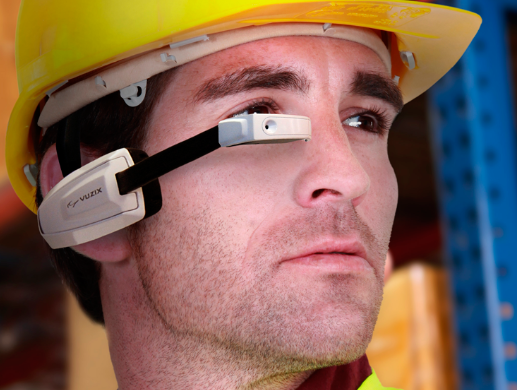SAP, Vuzix aim to push wearable use in enterprise

SAP and Vuzix this week at the Mobile World Congress in Barcelona will demonstrate how wearable technology will play into the enterprise environment---think oil and gas, manufacturing and warehouses---and the return on investment can be promising even if the fashion sense needs to come around a bit.

With Google Glass capturing a lot of the headlines, the reality is large enterprises aren't likely to plug into the search giant's environment because the reality is the systems integration is more complicated. In addition, large enterprises usually force hardware and software vendors to integrate to their existing systems.
With SAP and Vuzix, the plan is to combine Vuzix's M100 glasses, combine them with prereleases of warehouse management and field service applications and begin to define the use of wearables in the enterprise.
TechPro Research: Guidelines for Google Glass and wearables in the workplace | Wearables policy
Note that the M100, which runs $1,000 a unit, isn't going to win many fashion awards. However, the workers that would wear them already have to wear goggles anyway. The Vuzix and SAP combination are current being piloted in customers for warehouse management. Field service pilots will be underway later this year, said Josh Waddell, vice president of mobile management at SAP.
According to Dan Cui, vice president of business development at Vuzix, enterprise customers are interested in wearables and largely have their ROI cases worked out enough to procure 3,000 to 5,000 devices once pilots are over. For instance, an oil and gas company would use wearable goggles to network with peers on repairs. If a technician on an oil rig could allow a colleague in Atlanta guide him through a repair as they are seeing the same thing, the company wouldn't have to send out another worker. That scenario would save on travel and labor costs.
A similar business case could be made for a field technician, who generally repairs 10 things repeatedly. Wearable computing would save a trip and optimize labor if there was someone to walk a technician through a fix. In a warehouse, wearable technology can speed up product picking and cut down on errors.
Cui acknowledged that Google Glass "got everyone excited" but enterprises have been mobile for years. However, the technology in the field hasn't changed much. Waddell noted that enterprise mobility for manufacturing, warehouses and field operations "hasn't moved a lot in the last 10 years" so there's pent-up demand for innovation.
For now, the Vuzix goggles tend to be bulky, but Cui expects that to change even as augmented reality and back-end systems are integrated. "It's like the early days of the cell phones, but there's a great return on investment," said Cui. "You'll see the technology get sleeker and sleeker and applications that can deliver in the future."
Related: Freescale, partners launch wearable device reference platform